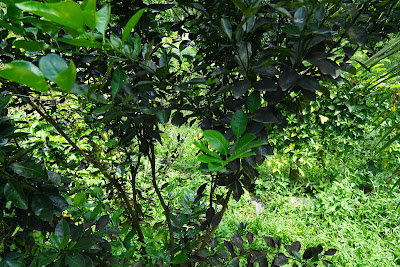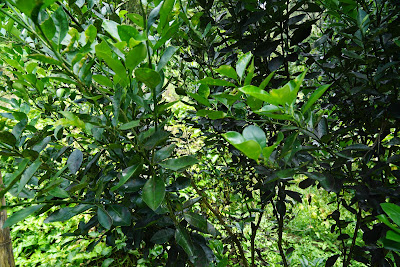BioJadi- An Economical & Ecological Bio Organic Liquid Plant Nutrition
 BioJadi is a natural and complete, organic liquid plant food in ready to be absorbed bio-available form. BioJadi creates unusual and spectacular growth results in plants, both for the domestic hobbyist and commercial agriculture, being able to lower costs and increase yield, enhance the profitability of farming while providing Sustainable Economical and Ecological solutions for our children's tomorrow.
BioJadi is a natural and complete, organic liquid plant food in ready to be absorbed bio-available form. BioJadi creates unusual and spectacular growth results in plants, both for the domestic hobbyist and commercial agriculture, being able to lower costs and increase yield, enhance the profitability of farming while providing Sustainable Economical and Ecological solutions for our children's tomorrow. BioJadi can produce beneficial results during all phases of plant growth. Starting from seed germination, vegetative growth, budding, flowering, fruiting and increase shelf life after harvest. It stimulates internal functions responsible for health and vitality of the plants.
BioJadi can be used for all types of plants from flower or ornamental plants, herbs, vegetables, rice/paddy, soft tissue plants such as banana, papaya and pineapple; medium tissue plants and small trees such as sugar cane, jathropha, cocoa and hard tissue large trees such as Jackfruit, Mango, Durians, Oil Palm ... etc. BioJadi has been proven in hundreds of field trials conducted in many different environments and climatic conditions.
BioJadi is produced by a proprietary biotechnology formulation made up of natural botanical extracts, natural amino acids, natural activated enzymes and natural indigenous microbes. It does not contain faeces and is clean. BioJadi is safe, non toxic, biodegradable and does not contain any harmful chemicals.
Some of BioJadi's unique characteristics and benefits are:
Crop Benefits
• Significant increase in yield – between 30% to 100% depending on type of crops
• Increase in crop’s quality – by taste, size, uniformity and colour
• Enhance plant immunity, reducing fault incidence in crop
• Activate & balance plants hormonal activities, resulting in better growth
• Improve and speed up growth rate and productivity
• Stimulate enzyme activity and increase chlorophyll synthesis
• Improve plant vitality, root mass, seed germination and transplant health
• Increase the ability of the plants in the absorption of essential nutrients and its utilization
• Correct nutrient deficiencies and strengthen weak or damaged crops
• Improve bud, flower and fruit production
• Enable crops to withstand extreme weather conditions
• Build up diseases resistance and pest resistance in plants
• Enhance early maturity, bringing the crops early to the market
• Improve shelf life of produce
Farm Benefits
• Stimulate development of micro flora in soils.
• Rapidly stabilize soil pH level and neutralize soil acidity
• Create a complete ecosystem in the soil quickly and efficiently
• Provide soil bacteria with essential nutrients for their growth
• Improve the tilth and water retention of soil
• Activate bio-augmentation and bio-remediation of soil toxicity from prolonged previous use of chemical fertilizers into healthy eco-systems
Economic Benefits
• Profitable to use - Economical and cost effective, reducing up to 50% of traditional fertilizers costs
• Easy to use – Simple application, non toxic, space saving and easy storage, transporting or handling
• Conserve natural resources and environmentally sound organic eco farming
• No harmful effects on plants, animals, humans or the environment
• Safe and non toxic, ensuring food safety and quality
BioJadi is unique because it is a combination of technologies, formulated into one product and is multi functional. BioJadi works better than any kind of fertilizer in the market. It is the solution to rising cost of expensive fertilizers and dangerous pest control chemicals. BioJadi is proven to be able to be a STAND ALONE – ALL IN ONE replacement of fertilizer.
BioJadi consists of
• Bio-available Macro Nutrients such as Nitrogen, Phosphorus, Potassium, Magnesium, Sodium and Calcium.
• Bio-available Micro Nutrients such as Manganese, Copper and Zinc
• Bio-available Organic Nutrients such as Humic Acid, Amino Acid and Proteins
• Activated Enzymes™ – Enzymes are important because it catalyzes the most commonly-used chemical reactions of plants and soil. Enzymes are important for plants in the modification of isoflavonoids. Enzymes play a role in modifying the structure of plant cell walls helping the plants build up diseases resistance and pest resistance and thereby prevent yield losses. In the soil, Enzymes are important as it catalyzes several important reactions necessary for the life processes of micro-organisms in soils and the stabilisation of soil structure, the decomposition of organic wastes, organic matter formation and nutrient cycling. The enzymes in BioJadi are produced and are then ‘activated’ for effective bio-assimilation by our proprietary biotechnology process.
• Jurassic Microbes™ – A special selection of indigenous microbes (those that occur naturally in a given environment). Jurassic Microbes are pre-grown in our proprietary microbial cultures to perform specific remediation tasks in the BioJadi formulation, breaking down important nutrients and activating enzymes, making it bio-available and also activating soil into complete eco-systems. Our Jurassic microbes are specially selected from the oldest tropical rainforest in the world, screened for the desired biological activity and hardiness. It is then grown and cultured in large quantities using our proprietary technology. The cultures are then harvested, tested for purity, and formulated into BioJadi.
As a foliar spray, BioJadi mobilizes important essential nutrients directly into the plants by the tissue on the leaves and the branches. This increases the rate of photosynthesis on the leaves and by doing so stimulate uptake of nutrients by the root system as well. The microbes in BioJadi also help carry bio-available nutrients directly into the plants which are more easily and efficiently utilised as they do not have to be dissolved and go though the soil solution followed by uptake of the root system which is inefficient and may be totally lost by runoff.
Foliar Nutrients in BioJadi can quickly correct any nutrient imbalance, and is by far the most effective and efficient way to apply on all types of plants, as they are more easily available and can be immediately utilized by the plants in comparison to soil nutrients.
BioJadi Power on 800 acres Papaya Farm
BioJadi sprayed on the ground soil will maintain the chemical balance and build a complete eco-system in the soil. The Jurassic Microbes accomplish this by taking part in all the major element transformations (mineralisation and immobilisation) of the soil. They convert the complex organic nutrients into simpler inorganic compounds which are made bio-available so that plants can make use of the nutrients. Jurassic microbes also absorb the simpler minerals (immobilisation) and prevent them from leaching out and thus conserve the essential nutrients in the soil. When they die, they too become part of organic matter. These essential nutrients are once again mineralised by the microbes for plant use. This turnover of root tissues and microbial cells that releases organically bound nutrients that are bio-available makes the soil eco-system complete and ideal for optimum fertilization.
For more information, collaboration and or business opportunity, kindly contact







































